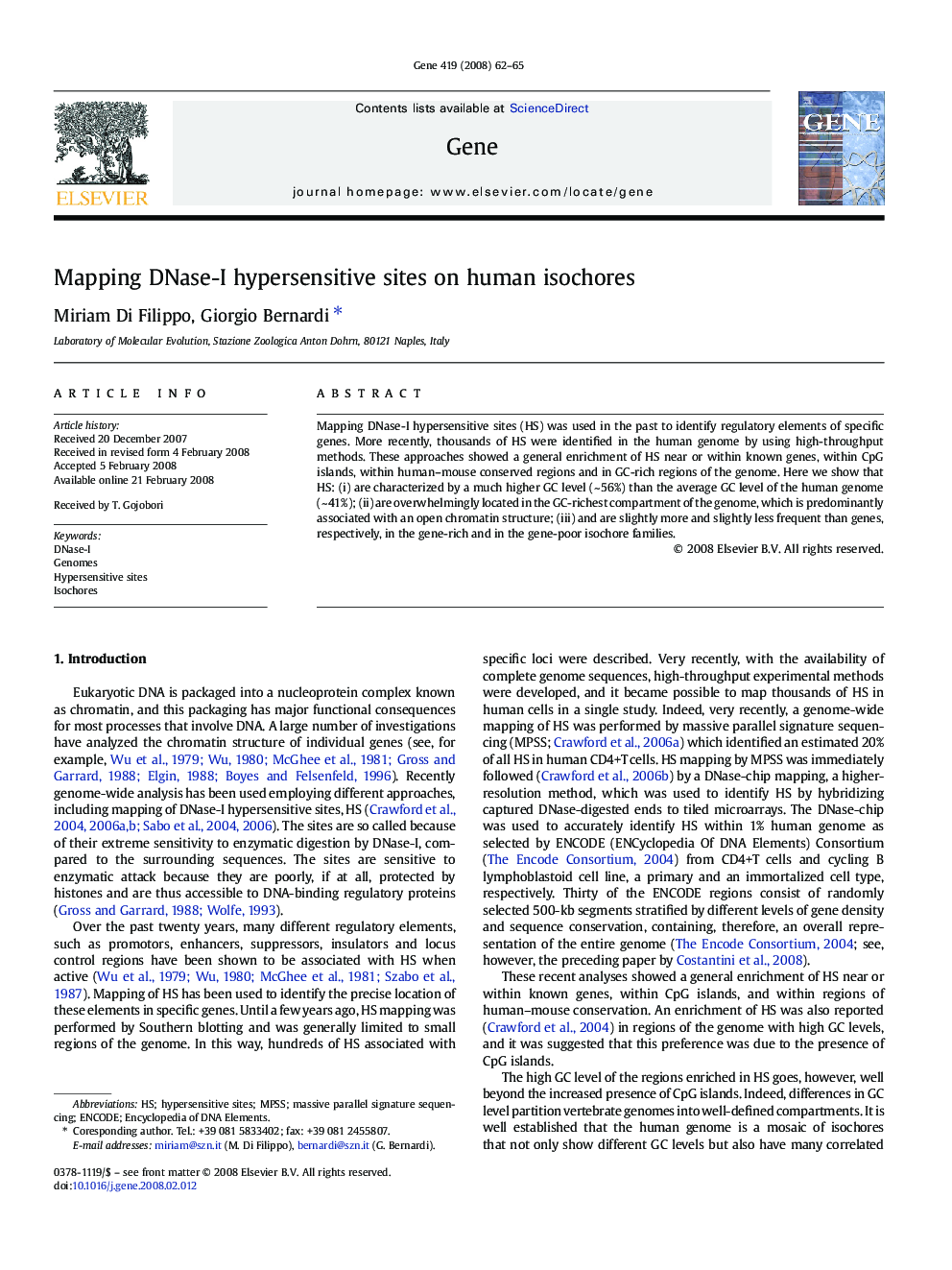| Article ID | Journal | Published Year | Pages | File Type |
|---|---|---|---|---|
| 2819251 | Gene | 2008 | 4 Pages |
Mapping DNase-I hypersensitive sites (HS) was used in the past to identify regulatory elements of specific genes. More recently, thousands of HS were identified in the human genome by using high-throughput methods. These approaches showed a general enrichment of HS near or within known genes, within CpG islands, within human–mouse conserved regions and in GC-rich regions of the genome. Here we show that HS: (i) are characterized by a much higher GC level (~ 56%) than the average GC level of the human genome (~ 41%); (ii) are overwhelmingly located in the GC-richest compartment of the genome, which is predominantly associated with an open chromatin structure; (iii) and are slightly more and slightly less frequent than genes, respectively, in the gene-rich and in the gene-poor isochore families.
